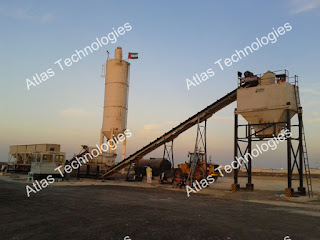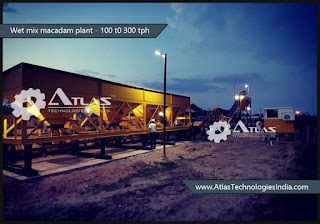Are there any specific guidelines or standards for water-bound macadam road construction?
Water-bound macadam (WBM), also known as water mix macadam, is a type of road construction material used for pavement layers. It is a simple and economical method of road construction that was commonly used in the past but has been largely replaced by more modern techniques.
Water-bound macadam consists of four layers: sub-grade, sub-base, base, and surface course. The sub-grade is the natural soil or compacted earth on which the road is built. The sub-base layer is made up of compacted aggregates like gravel or crushed stone, which provides additional strength and stability to the road.
The base layer in water-bound macadam is composed of a mixture of coarse aggregates, such as crushed stone or gravel, and fine aggregates like sand. These aggregates are uniformly mixed with water and compacted to form a dense, bound layer. The water helps in the compaction process and promotes the binding of aggregates.
The surface course is the topmost layer of the road and is also made of water-bound macadam. It typically consists of smaller-sized aggregates, such as crushed stone or gravel, mixed with a small amount of fine material like sand or clay. Water is added to the mixture during compaction to aid in binding the aggregates together.
Water-bound macadam is usually used for low-traffic roads or rural roads where the traffic load is relatively light. It provides good stability and durability, but it is not suitable for heavy traffic or high-speed roads. In modern road construction, techniques like asphalt concrete or concrete pavement are commonly used due to their superior performance and longer life span.
It's worth noting that road construction practices and materials may vary by region and specific project requirements. Therefore, it is always important to consult local guidelines and engineering standards when planning road construction projects.
Yes, there are specific guidelines and standards for water-bound macadam road construction. The standards and specifications may vary by country or region, but here are some commonly referenced guidelines:
IRC: The Indian Road Congress (IRC) provides guidelines for road construction in India. IRC 109: "Guidelines for Wet Mix Macadam" and IRC 37: "Guidelines for the Construction of Water-Bound Macadam" outline the specifications and construction practices for water-bound macadam roads in India.
ASTM: The American Society for Testing and Materials (ASTM) has developed standards related to water-bound macadam road construction. ASTM D448: "Standard Classification for Sizes of Aggregate for Road and Bridge Construction" provides guidance on aggregate sizes, while ASTM D1557: "Standard Test Methods for Laboratory Compaction Characteristics of Soil Using Modified Effort" outlines compaction testing procedures.
AASHTO: The American Association of State Highway and Transportation Officials (AASHTO) publishes guidelines for road construction in the United States. AASHTO T180: "Standard Method of Test for Moisture-Density Relations of Soils" and AASHTO T99: "Standard Method of Test for Moisture-Density Relations of Soils Using a 2.5 kg (5.5 lb) Rammer and a 305 mm (12 in.) Drop" are used to determine the compaction characteristics of water-bound macadam.
BS: The British Standards (BS) provide specifications for road construction in the United Kingdom. BS 4987: "Coated Macadam (Asphalt Concrete)" and BS 594: "Specification for Aggregates from Natural Sources for Concrete" include relevant information for water-bound macadam construction.
These are just a few examples of the guidelines and standards available. It is essential to consult the specific standards and specifications issued by the relevant authorities in your country or region for accurate and up-to-date information on water-bound macadam road construction.





Comments
Post a Comment